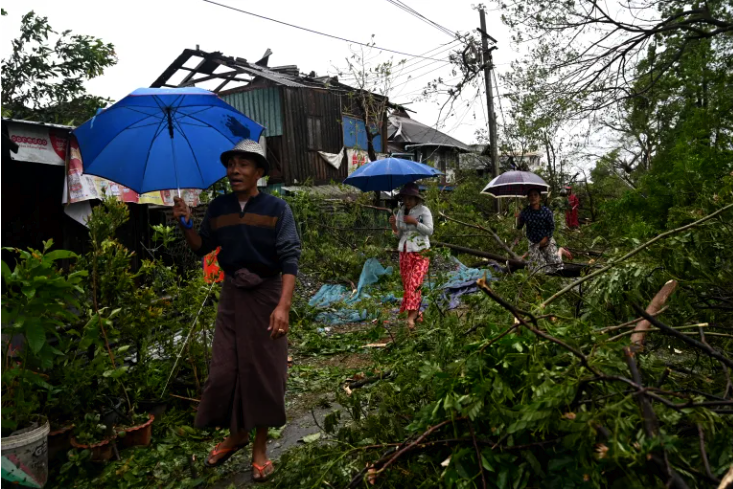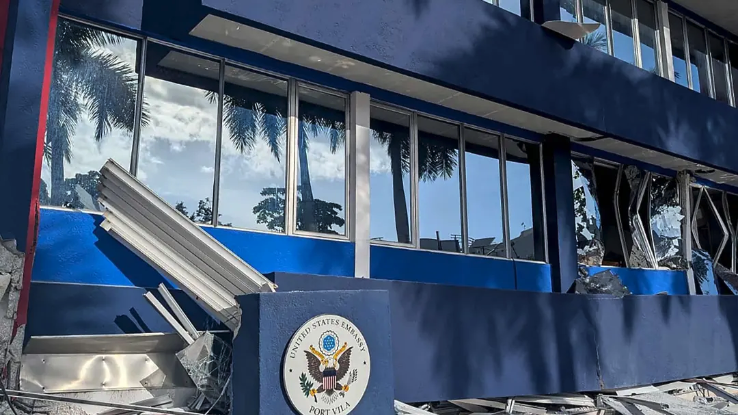Cyclone Mocha: 5 Dead, 700 Injured in Myanmar
At least five people have died in Myanmar after Cyclone Mocha ripped through the Myanmar-Bangladesh coasts on Sunday, destroying hundreds of makeshift Rohingya shelters at the world's largest refugee camp in Bangladesh's Cox's Bazar.

Facts
- At least five people have died in Myanmar after Cyclone Mocha ripped through the Myanmar-Bangladesh coasts on Sunday, destroying hundreds of makeshift Rohingya shelters at the world's largest refugee camp in Bangladesh's Cox's Bazar.1
- The cyclone, which made landfall in Myanmar's Sittwe — capital of Rakhine state — brought wind speeds of over 200kph (125mph), blowing roofs off buildings, uprooting trees, crumpling mobile towers, and cutting off powerlines.2
- As seawater raced through streets into many low-lying areas near the shore, more than 4K of Sittwe's 300K residents were evacuated to other cities.3
- Strong winds also injured over 700 of the approximately 20K people sheltered in monasteries, pagodas, and schools in the city. Volunteers said the shelters in Sittwe were running out of food, as additional residents continued to arrive from the flooded city.4
- Although there haven't yet been any reports of casualties in Bangladesh, nearly 2.5K houses on the island of Saint Martin have been destroyed, leaving thousands homeless.5
- The cyclone is expected to dissipate over northern Myanmar on Monday night, however it's still bringing strong winds and heavy rain to the country. As of Monday morning, rescuers had evacuated about 1K people trapped by 3.6-meter deep seawater along the west coast.6
Sources: 1BBC News, 2CNN, 3Associated Press, 4The Hindu, 5India Today, and 6Guardian.
Narratives
- Narrative A, as provided by Associated Press. Cyclones in the Bay of Bengal are becoming more intense, potent, and destructive because of climate change, which is warming the oceans at an alarming speed and allowing cyclones to retain their energy for longer. Bangladesh and Myanmar are particularly threatened because they're low-lying and are home to some of the world's poorest populations.
- Narrative B, as provided by Down To Earth. There's no real evidence that cyclones are arriving more often due to climate change. While some types of extreme weather can be directly attributed to global warming, more research is needed to conclude that climate change directly affects cyclones' frequency and power. As cyclones are unavoidable natural disasters, policies to boost disaster preparation are crucial to limiting damage once calamity strikes.






